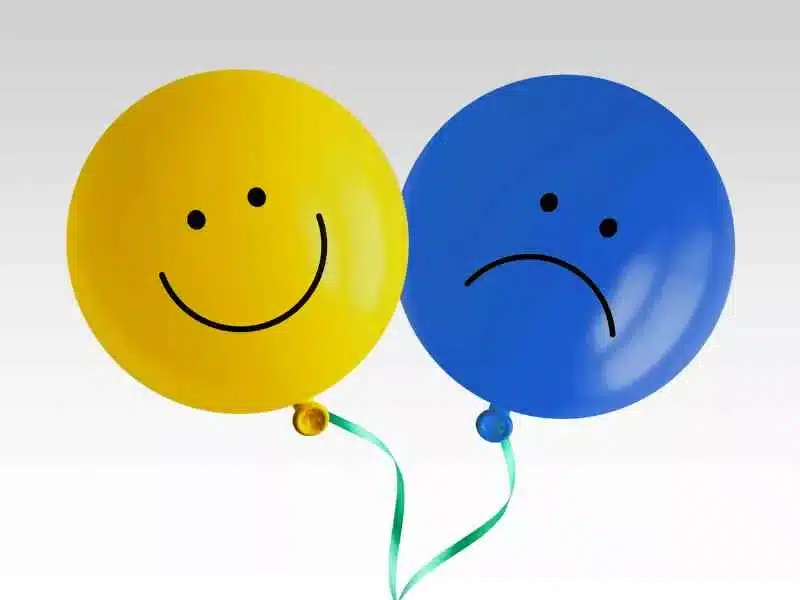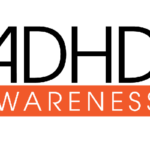Bipolar I and Bipolar II share symptoms but differ in intensity and duration

As you sip your morning coffee and look out the window, the world seems to hum with its usual, predictable rhythm. But imagine for a moment that the pace of the world’s heartbeat suddenly changes for you. The predictable becomes unpredictable, and you find yourself caught up in a chaotic dance between mania and depression. This is a day in the life of someone living with bipolar disorder, a complex and multifaceted condition that manifests in diverse ways.
Bipolar disorder is a mental health condition that is characterized by significant mood swings, including manic highs and depressive lows.
The differences between its two primary types – Bipolar I vs. Bipolar II – can often be misinterpreted or misunderstood. However, it’s these very differences that are key to identifying, understanding, and managing the disorder. Let’s explore these two types, their unique characteristics, and how early identification and outpatient treatment can help individuals lead fulfilling lives.
Bipolar I Vs. Bipolar II: The Dance of Differences
The primary difference between Bipolar I and Bipolar II revolves around the intensity and duration of manic and depressive episodes.
In the narrative of Bipolar I, the story of Jane, a fictional character, can shed some light. Jane is a successful attorney, admired for her tireless energy and dynamic charisma. She can work tirelessly for days, churning out creative solutions with impressive speed. But behind this whirlwind of productivity lurks a darker reality. Her energy is a symptom of manic episodes that can last for at least a week.
During these times, Jane might take on unrealistic workloads, make impulsive decisions, or spend recklessly. She sleeps less, talks faster, and her mind races with thoughts. Her friends and colleagues might notice this elevated mood, finding it either engaging or unsettling. Unfortunately, these manic episodes are often followed by periods of severe depression, which can last at least two weeks, hindering her work and personal life.
In contrast, let’s meet Tom, a representation of Bipolar II. Tom is a talented musician, praised for his soulful compositions. Unlike Jane, Tom never experiences full-blown manic episodes. Instead, he goes through periods of hypomania, a less severe form of mania. He might have periods of increased energy, creativity, and productivity, much like Jane, but without the more extreme behaviors or consequences.
However, the depressive episodes Tom experiences are as intense as Jane’s, if not more so. They are prolonged, stretching over weeks, and can be debilitating. The world, once filled with harmonious melodies, can seem to lose its color and rhythm for Tom during these episodes.
Cyclothymic Disorder
Cyclothymic Disorder, often considered a milder form of bipolar disorder, is another important aspect to consider when discussing mood disorders. This condition is characterized by periods of hypomanic symptoms and periods of depressive symptoms that are less severe than those seen in full-blown manic or major depressive episodes.
The primary distinction between cyclothymic disorder and Bipolar I and II lies in the severity and duration of the mood episodes. Despite its milder nature, it can still significantly affect an individual’s life, emphasizing the importance of diagnosis and treatment.
Helpful Resources
Both document open in PDFs for saving or printing.


Bipolar I and 2 Symptoms
Manic, Hypomanic, and Depressive Episodes
In understanding bipolar disorder, recognizing the signs of manic, hypomanic, and depressive episodes is fundamental. Each of these mood states carries its own set of characteristics that can vary in intensity and duration, and can significantly impact the daily life of an individual living with this condition.
Manic Episode Symptoms
Manic episodes are characterized by an abnormally elevated, expansive, or irritable mood and increased energy or activity that lasts for at least one week, most of the day, nearly every day. These episodes are typically present in Bipolar I disorder.
Here are some key symptoms that may be observed:
- Feeling very up, high, elated, extremely irritable, or touchy
- Feeling jumpy or wired, or being more active than usual
- Racing thoughts
- Decreased need for sleep
- Talking fast about a lot of different things (“flight of ideas”)
- Excessive appetite for food, drinking, sex, or other pleasurable activities
- Feeling able to do many things at once without getting tired
- Feeling unusually important, talented, or powerful
Let’s think about Jane again, our attorney living with Bipolar I disorder. During her manic episodes, she might feel invincible, capable of handling multiple high-stakes cases at once. She might sleep less, spending hours into the night researching and preparing. She might also make impulsive decisions, like making large purchases or taking on unrealistic workloads.
Hypomanic Episode Symptoms
Hypomanic episodes, a less severe form of manic episodes, are a defining characteristic of Bipolar II disorder. While sharing many of the symptoms of a manic episode, hypomania is typically shorter (lasting at least four consecutive days) and less severe. It's also less likely to cause impairment in daily functioning or necessitate hospitalization.
- A noticeable and persistent elevated, expansive, or irritable mood.
- Increased activity or energy levels.
- Grandiose or overly confident self-esteem.
- Less need for sleep.
- More talkative than usual, or pressure to keep talking.
- Thoughts racing or feeling like your mind is incredibly sharp.
- Easily distracted, with attention pulled in many directions.
- Increased involvement in activities that have a high potential for painful consequences (e.g., excessive buying sprees, engaging in ill-advised business decisions).
Think of Tom, our musician with Bipolar II disorder. During his hypomanic episodes, he might feel a surge of creativity, composing music for hours with little sleep. He might take on numerous projects and feel incredibly productive. Yet, these symptoms are less severe and less noticeable to others than what Jane experiences during her manic episodes.
Depressive Episodes
Depressive episodes are characterized by a period of at least two weeks where the individual feels depressed or loses interest in almost all activities. These episodes can occur in both Bipolar I and II disorders.
- Feeling sad, empty, or hopeless.
- Loss of interest or pleasure in nearly all activities
- Significant weight loss (when not dieting) or weight gain, or decrease or increase in appetite.
- Insomnia or hypersomnia (sleeping too much).
- Physical agitation or slowing down of thoughts and reduction of physical movements.
- Fatigue or loss of energy.
- Feeling worthless or excessively guilty.
- Difficulty thinking, concentrating, or making decisions.
- Recurrent thoughts of death or suicide.
In their depressive episodes, both Jane and Tom might experience intense feelings of sadness, lose interest in their work, and struggle with daily tasks. They might sleep too much or too little, struggle with concentration, and even have thoughts of death or suicide.
Please note that these are not exhaustive lists, and not everyone with bipolar disorder will experience all these symptoms. If you or someone you know is experiencing these symptoms, it’s important to seek professional help. Bipolar disorder can be effectively managed with the right treatment, allowing those living with the condition to lead healthy and productive lives.
These distinctions are critical in making a diagnosis, but the symptoms can overlap with other disorders, making it challenging. This is where the importance of professional evaluation and early identification comes in.
Diagnosing Bipolar Disorder
To diagnose bipolar disorder a psychiatrist may complete a physical
exam and order medical testing to rule out other illnesses.
Bipolar disorder is diagnosed based on the severity, length, and frequency of an
individual’s symptoms and experiences over their lifetime.
Some people have bipolar disorder for years before it’s diagnosed.
Misdiagnosis can happen some bipolar disorder symptoms are like
those of other illnesses.
Importance of Early Identification
Identifying bipolar disorder early can mitigate its impact and help individuals manage their symptoms more effectively. Furthermore, an early diagnosis can limit the potential for misdiagnosis as discussed earlier, which is common due to the overlapping symptoms with conditions like depression, ADHD, and anxiety disorders.
For instance, both Jane and Tom had periods where they struggled with focus and impulsivity, which could be misdiagnosed as ADHD. Similarly, Tom’s profound depressive episodes could have led to an initial diagnosis of major depressive disorder.
Treatment Options
Once a diagnosis of Bipolar I or II is established, the journey towards managing the disorder begins.
Treatment helps many people, even those with the most severe forms of bipolar
disorder. Psychiatrists treat bipolar disorder with medications,
psychotherapy, or a combination of treatments.
For patients like Jane and Tom, a combination of medication management and psychotherapy can be highly effective. Medications, including mood stabilizers, antipsychotics, and sometimes antidepressants, can help manage extreme mood swings.
Psychotherapy, including cognitive-behavioral therapy, can provide patients with the strategies they need to cope with their disorder and mitigate its impact on daily life. Outpatient treatment can provide a supportive and structured environment to explore these options and find a balance between managing symptoms and maintaining life’s rhythm.
Understanding the differences between Bipolar I and Bipolar II is critical to ensuring accurate diagnosis and effective treatment. By bringing these disorders into the light and sharing stories like Jane and Tom’s, we can encourage individuals to seek help and remind them that they are not alone in their journey. With the right support and treatment, they can continue to lead fulfilling, successful lives.
Novum Psychiatry Is Here To Help
Professional treatment can provide people with the support and tools they need to manage bipolar disorder and maximize their quality of life. With a combination of medication and psychotherapy, individuals can learn to navigate their mood swings, understand their triggers, and maintain a stable, fulfilling lifestyle.
Our Plainville and Sudbury offices are accepting new patients for in-person and telemedicine appointments for residents of Massachusetts and Rhode Island. We also take a wide range of health insurance plans, including Medicare. Request your confidential evaluation today.
Our Experienced Team of Psychiatrists Can Help!
We know that taking the first step can be difficult.
Our highly-trained psychiatrists and therapists offer a comprehensive and confidential approach to private, outpatient psychiatric care. Whether this is your first time seeking psychiatric care or if you are seeking a new provider, Novum Psychiatry can help. In-person and telehealth appointments available. We accept health insurance.





